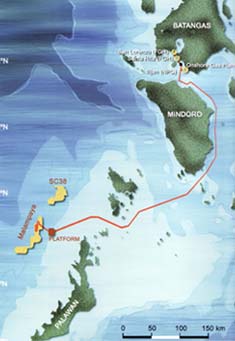The Malampaya gas field powering 20% of Luzon through
indigenous natural gas demonstrated anew its reliability and resilience in times of natural
disasters, as Typhoon Aghon caused a substantial decrease in available power supply.
Malampaya remained 100% available to supply gas-fired power plants on demand during the
onslaught of Typhoon Aghon.
“Prime Energy and its partners in the Malampaya consortium remain committed to supporting
the Department of Energy’s (DOE) drive to keep the grid stable by ensuring uninterrupted
operations and fuel supply to power generators during extreme weather ,” said Donnabel Kuizon
Cruz, Managing Director and General Manager of Prime Energy Resources Development B.V.
According to the DOE, several base load power plants were forced to shut down due to inability
to operate under inclement weather. The 1,200MW Ilijan power plant lost its source of fuel –
LNG – as its Floating Storage Unit (FSU) had to be unberthed and relocated for safety reasons.
Pagbilao Units 1, 2, and 3, Masinloc, SPBL and Botocan coal-fired power plants with a total of
1,995 MW were shut down due to the typhoon.
The significant loss of power capacity led to a call by DOE Secretary Raphael Lotilla to minimize
the use of electricity in Luzon, following the red alert notice of the National Grid Corporation of
the Philippines (NGCP).
The world-class Malampaya infrastructure is designed to operate safely in adverse weather
conditions, demonstrating its unique capability to consistently supply gas to power plants and
help assure Filipino consumers of stable and reliable electricity, regardless of the weather.
“Malampaya will always be ready to provide reliable natural gas. This situation demonstrates the
critical role Malampaya plays in the nation’s energy security,” emphasized Cruz.
During the peak of yellow and red alerts in April, Malampaya exceeded its normal supply capacity
to enable maximum power generation from its customers.
Prime Energy, a wholly owned subsidiary of Prime Infra, is set to inject up to USD$800 million to
extend the life of Malampaya by drilling two Deepwater development wells in the Camago and
Malampaya East fields, as well as a third exploration well, Bagong Pagasa.





